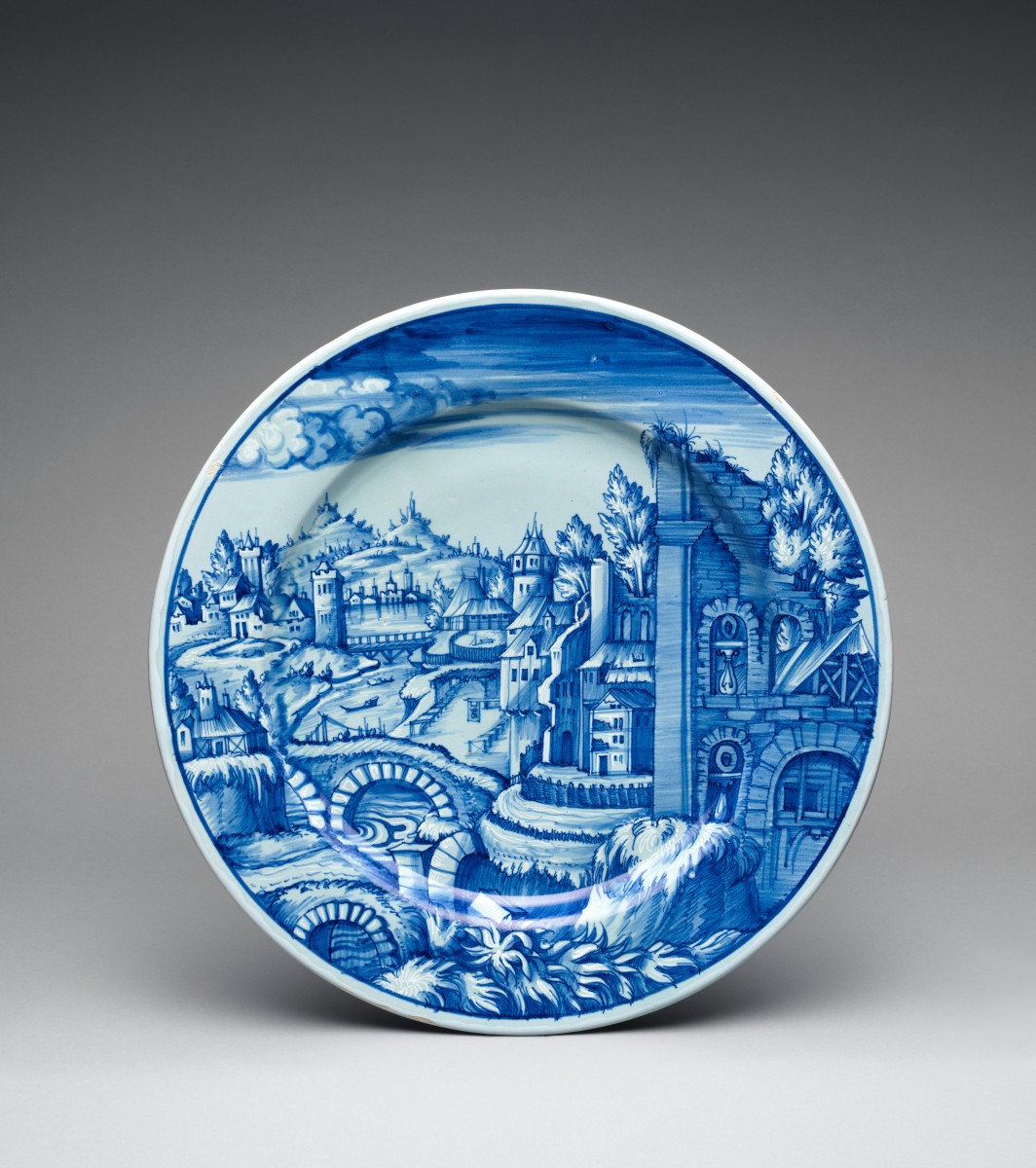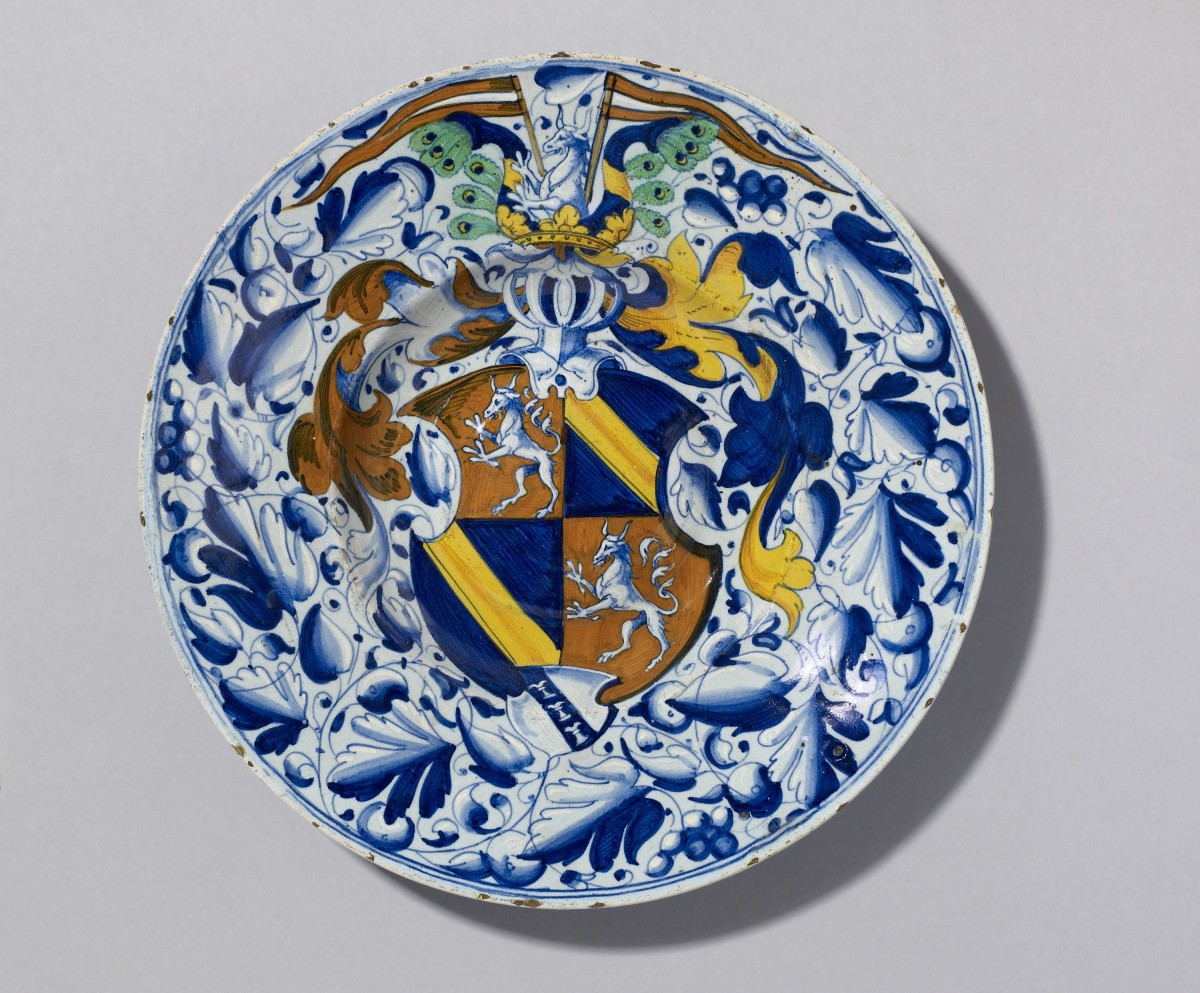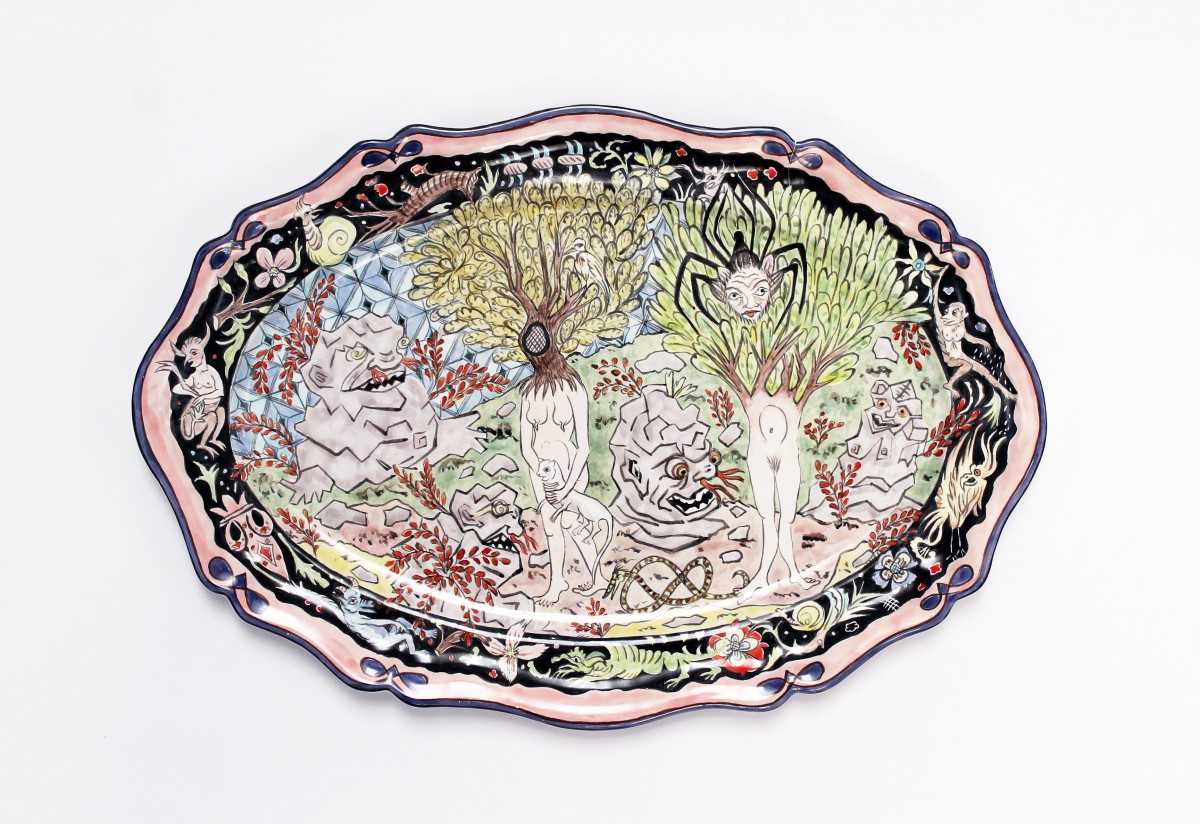Of tableware and empire
A new exhibition at the Gardiner Museum explores how the artisans and potters of Renaissance Venice took inspiration from around the world and made it their own.

Installation View, Renaissance Venice: Life and Luxury at the Crossroads, Gardiner Museum. Photo by Toni Hafkenscheid.
What makes a city a thriving artistic centre? What circumstances are necessary to turn local products into a celebrated commercial item? Presenting a fascinating portrait of Venetian industry during the 1500s, Renaissance Venice: Life and Luxury at the Crossroads makes a dynamic case for artistic production rooted in technology, talent and international trade.
Gathering together rare examples of Chinese porcelain, Islamic metalware, Venetian glass, ceramics, textiles and contemporary art from museums and collections across North America and Europe (including the AGO), this new exhibition at the Gardiner Museum immerses visitors in a world of striking colour and lavish ornament, without losing sight of the inequalities and labour behind them.
In the 1400s, Chinese porcelain was the rarest type of ceramic goods available − brought to Venice by Mamluk traders and prized by rulers across Europe. A gateway city, Venice commanded trade in the Mediterranean for 400 years, beginning in roughly 1200, importing goods and peoples and technology from the East and exporting them to the rest of Europe.
Among these imports was a ceramic tradition known as maioloca (tin-glazed earthenware), a process invented by potters around 800 CE in what is present-day Iraq. Capable of imitating the revered blue and white patterns and watertight finish of high-cost Chinese porcelain, maioloca grew in popularity throughout the Middle Ages. An affordable luxury with an eager foreign market, artisans and potters in Venice responded, capitalizing on the availability of imported tin from Britain, vivid pigments obtained through extensive trading networks and an influx of migrant artisans, to become a manufacturing centre in its own right.
A collaborative effort, the creation of maiolica serving ware − plates, platters, pitchers − was led by master craftsmen, under whose direction toiled potters, painters, kiln specialists and their apprentices. Always competing with imports, Venetian craftsmen embraced and responded to the tastes of the period with colourful design, detailed embellishments and blue & white patterns that would emulate Chinese porcelain.
Merchant families from Augsburg and Nuremberg were important patrons of Venetian maiolica and glassware, and this Venetian-made plate around 1554, on loan courtesy the Thomson Collection of European Art at the AGO, with the coat of arms of Georg Scheurl and Elisabeth Derrer of Neremberg, reflects the taste for floral motifs and blue and white colours.
And while the production of and demand for Venetian ceramics was later outstripped by the city’s renowned glassware and lace production, maiolica remains a living tradition. Among the highlights of the exhibition are its many contemporary interventions. Alongside works by Dorie Millerson and Nadia Myre, for example, is a display by Toronto ceramics artist Lindsay Montgomery, who, in six steps, demonstrates the actual process of creating a maiolica platter.
Renaissance Venice: Life and Luxury at the Crossroads is on now through January 9, 2022 at the Gardiner Museum. For more art news and exhibition highlights from Toronto and the world, subscribe to AGOinsider.




